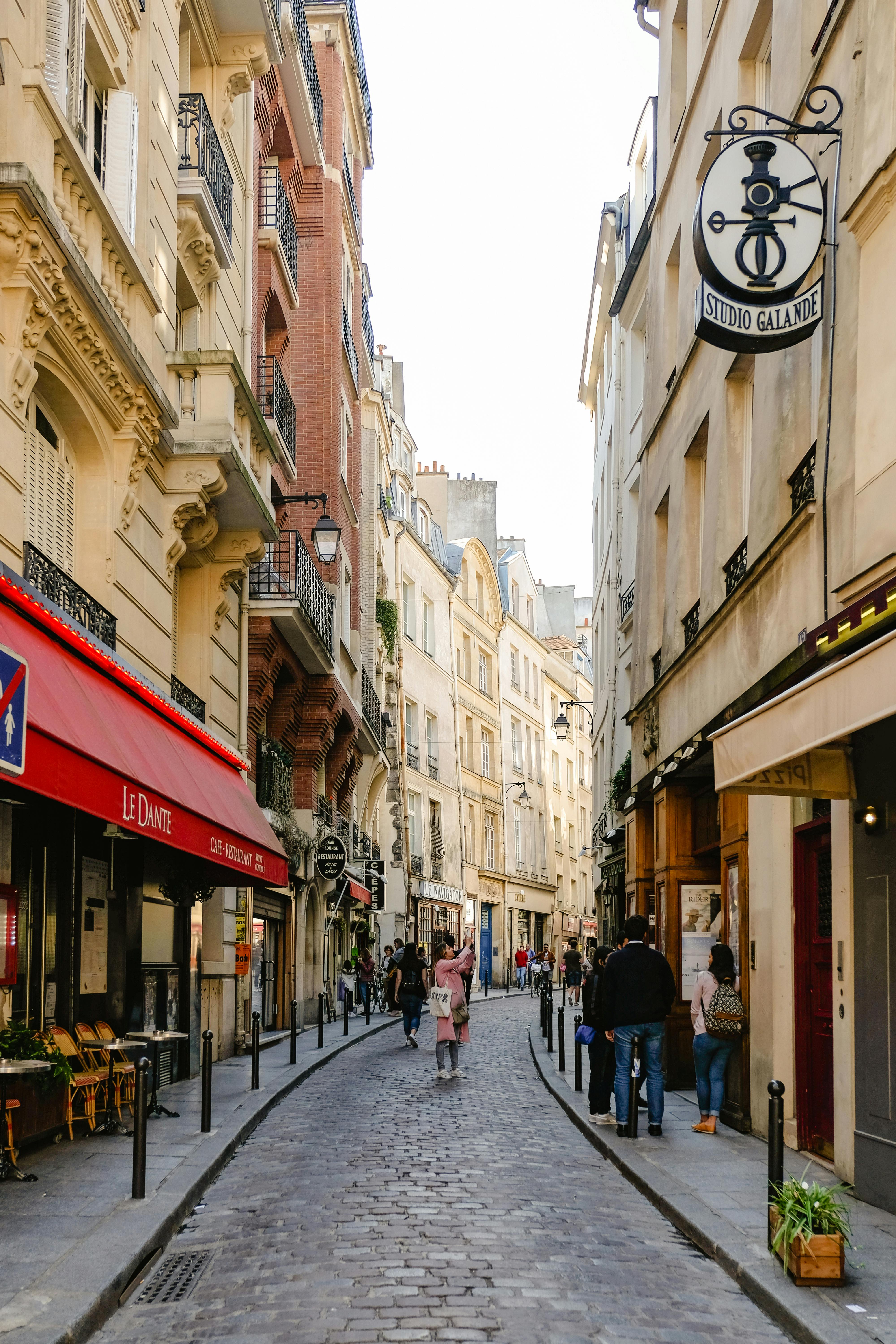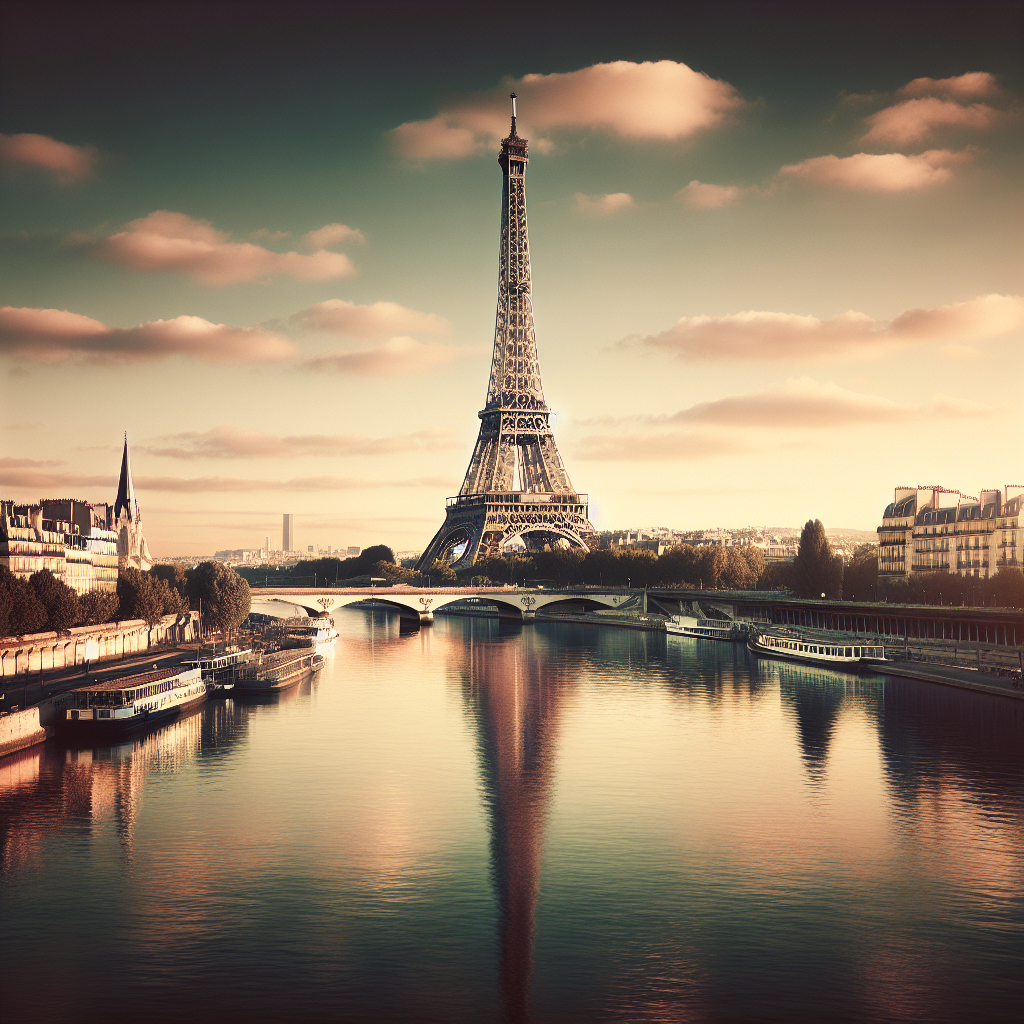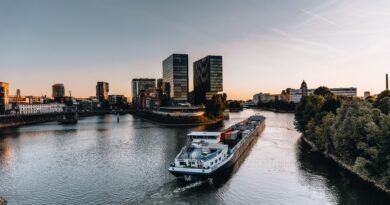Eiffel Tower
Picture yourself strolling along the Seine River, the heart of Paris beating rhythmically around you. Looking up, you spot the French icon piercing the sky, standing tall in its iconic form – the Eiffel Tower. This article is all about your next travel destination, where metal meets art, and history intertwines with the present – the symbol of France and an adventure seeker’s dream. Sketching out its illustrious history, unique structure, and fascinating role in global culture, this article will offer an in-depth exploration of the Eiffel Tower and why it should hold a spot on your travel bucket list. Enjoy your hypothetical journey to the land of Champaign, cheese, and romance.
Historical Background of the Eiffel Tower
The Eiffel Tower, one of the most iconic landmarks globally, has quite a fascinating history that ranges from its conception to its eventual rise to fame. Next time you stand beneath the towering structure, you’ll appreciate the Eiffel Tower in a whole new depth with this knowledge in mind.
Origins and Design of the Tower
The idea for creation of the Eiffel Tower was born out of competition. The French authorities wanted to celebrate the 100th anniversary of the French Revolution with an architectural marvel that would tower over Paris, eclipsing the London’s Crystal Palace, which was the tallest building back then. Designed by Gustave Eiffel’s company, the initial drawings were sketched by Maurice Koechlin and Emile Nouguier and the design is often viewed as an incredible display of structural ingenuity.
Inception and Construction
The process of constructing the Eiffel Tower was no small task. From 1887 to 1889, over two years, the tower was assembled by approximately 300 workers, who bolted together more than 18,000 individual iron pieces. Surprisingly, this exceptionally dangerous venture resulted in only one construction worker’s fatality, a testament to Eiffel’s prioritisation of worker safety.
Significance in World Fairs
The Eiffel Tower was unveiled at the 1889 Exposition Universelle (World’s Fair) held in Paris to celebrate the 100th year anniversary of the French Revolution. The tower, which was the entrance arch, was a hit with the fair attendees, who could ride elevators to the top. This massive fair, which attracted millions of visitors from around the world, served to highlight the Eiffel Tower’s striking presence on the world stage right from its inception.
Controversies and Reactions
Upon its unveiling, the tower garnered mixed reactions from the locals. Some Parisians deemed it an eyesore and labelled it as ‘useless’ and ‘monstrous’. Artists, writers, and architects even sent a petition to the city government denouncing the tower. Over time, though, the tower eventually grew on the people, serving as a national symbol and a beacon of French pride.
Architectural Details of the Eiffel Tower
One cannot discuss the Eiffel Tower without commenting on its architectural brilliance. Its aesthetics, material usage, and engineering innovation combined make this structure an epitome of architectural ingenuity.
Design and Innovations
Beyond its height, the Eiffel Tower’s design was revolutionary. Its open lattice iron structure was a radical departure from the era’s prevailing architectural styles. The wind-resistance design which took into account all pressure forces, was a feat in civil engineering.
Use of Iron and Materials
The Eiffel Tower is built almost entirely of open lattice wrought iron, a testament to the material’s strength and flexibility. The iron framework weighs about 7,300 tons, while the entire structure, including non-metal components, is approximately 10,000 tons.
Height and Measurements
The Eiffel Tower stands at a height of 330 meters (1,083 feet), not including its antennas. Due to thermal expansion, the height can vary by as much as 15 cm with temperature changes. The tower’s three levels are each at different heights and serve various purposes.
Three Levels and Their Uses
The Eiffel Tower comprises three levels accessible to the public. The first and second levels house shops and restaurants. The third level, also known as the summit, is an observation deck that provides breathtaking panoramic views of Paris and beyond.

The Eiffel Tower and Tourism
Beyond its structural brilliance and historical significance, the Eiffel Tower has played a critical role in tourism.
Historic Touristic Attraction
Since its inception, the Eiffel Tower has remained a central tourist attraction. It was the tallest structure in the world until 1930, which sparked a global fascination with this towering icon.
Visitor Statistics
Today, the Eiffel Tower is one of the world’s most visited monuments, with approximately 7 million people annually. It welcomes more visitors than any other paid monument worldwide.
Impact on Paris Tourism
The Eiffel Tower has not only contributed significantly to France’s tourism revenue, but has also become synonymous with the image of Paris. It’s a must-visit for everyone who steps into the City of Lights.
Cultural Significance of the Eiffel Tower
The Eiffel Tower is far more than just a monument to the people of France. It holds a special place in their hearts and plays a significant role in French culture.
Symbol of Paris
Over time, the Eiffel Tower has come to symbolise Paris itself. It is hard to imagine the city’s skyline without the towering silhouette of the Eiffel in it.
Association with Romanticism
Paris is often referred to as the ‘City of Love’, and the Eiffel Tower plays a significant role. With its sparkling nighttime lights and fantastic views, the tower sets the stage for numerous romantic moments and marriage proposals.
Depictions in Arts and Media
The Eiffel Tower is a popular subject across various forms of art and media. It has been depicted in countless photographs, films, books, and paintings, further solidifying its cultural significance.

The Eiffel Tower in Modern Times
While the tower’s history is fascinating, its story didn’t end in the 19th century. Even in modern times, the Eiffel Tower has had quite the journey.
The 20th Century and World War II
The Eiffel Tower saw considerable action during the 20th century, particularly during World War II. It served as a radio transmission tower, aiding in communication and navigation.
The Eiffel Tower Today
Today, the Eiffel Tower holds a powerful presence not only in Paris but also in the global perception of France. It continues to attract millions of visitors each year and serves as a venue for important cultural events and celebrations.
21st Century Innovations
In the 21st century, the Eiffel Tower continues to evolve. Recent innovations include the addition of wind turbines and solar panels, making the iconic monument part of Paris’ sustainability efforts.
Maintenance and Preservation of the Eiffel Tower
Maintaining and preserving the Eiffel Tower is a pivotal task involving meticulous planning and execution. Let’s take a peek behind the scenes.
Renovations and Regular Maintenance
The tower undergoes regular maintenance works and renovations to maintain its stability and ensure safety for the millions who visit every year. This includes applying 60 tons of paint every seven years to protect it from rust.
Preservation Strategies
Efforts to preserve the Eiffel Tower involve not only maintaining its physical structure but also its historical and cultural significance. Therefore, improvements and adjustments to the tower always consider its history, enduring image, and cultural resonance.
Challenges and Future Plans
Managing the preservation of a historic monument like the Eiffel Tower isn’t easy. There’s always the challenge of proving funds and managing the tower’s upkeep while keeping tourists’ experience seamless. The tower continues to evolve with new ideas being implemented to maintain its status as a world-leading monument, thus symbolizing the city’s innovative spirit.

Access and Visit to the Eiffel Tower
Got a trip to the tower in your itinerary? Here’s everything you should know.
Guided Tours
Guided tours offer a comprehensive view of the tower and its history, allowing you an insider look at its architectural brilliance and fascinating secrets.
Exploring On Your Own
For those who prefer solitary adventures, exploring the Eiffel Tower on their own can be an exciting and inspiring experience.
Best Time to Visit
The Eiffel Tower is open all year round, and while there’s never a bad time to visit, the spring and summer months offer longer daylight hours to enjoy this architectural masterpiece.
Accessibility for Disabled Visitors
The Eiffel Tower is also accessible to disabled visitors, with adapted elevators and facilities available to ensure a comfortable experience.
Fascinating Facts About the Eiffel Tower
Think you know everything about the Eiffel Tower?
Intriguing Stories and Events
The tower harbors countless intriguing tales, like the fact that Gustave Eiffel had a private apartment on top of the tower, and the tower was once sold by a con artist, not once, but twice!
Uncommon Knowledge About the Tower
From the tower swaying slightly in the wind to being repainted every seven years, there’s a sea of lesser-known facts about this iconic monument that will leave you awestruck.

The Eiffel Tower in Global Events and Exhibitions
The Eiffel Tower has played a key role in various global events and exhibitions, asserting its cultural relevance and international symbolic status.
Role in Worldwide Celebrations and Events
The Eiffel Tower often hosts celebrations and events. For example, on New Year’s Eve, it becomes the centerpiece of a spectacular light show enjoyed by people worldwide.
Green Initiatives and the Eiffel Tower
Green initiatives adopted in the tower’s operation are noteworthy. From its use of renewable energy to house two vertical wind turbines and solar panels to the rainwater collection system, the tower sets an example of sustainability.
The Eiffel Tower Experience
And finally, let’s talk about the unique experiences awaiting you at the Eiffel Tower.
The Panoramic Views
The panoramic views from the tower are nothing less than magnificent. Whether you’re gazing out at the city during the day or enjoying the shimmering lights at night, it’s a sight you’ll always remember.
Culinary Experiences in the Tower
Your visits to the Tower can also be a gastronomic adventure with two exquisite restaurants: the 58 Eiffel on the first floor and the Michelin-starred Le Jules Verne on the second floor.
Shopping at the Eiffel Tower
You also have the chance to shop for souvenirs at the various shops found throughout the Eiffel Tower – perfect mementos to remember your trip to the illustrious monument!
To sum it up, the Eiffel Tower is not just a testament to human ingenuity and ambition; it’s a symbol, a beacon that draws people from around the world. It’s an icon of France, a reflection of its past, and a beacon for its future. So, next time when you take a look at this impressive structure, you’ll know the story that it carries in its iron bones, the heart of a city pulsating within it.




